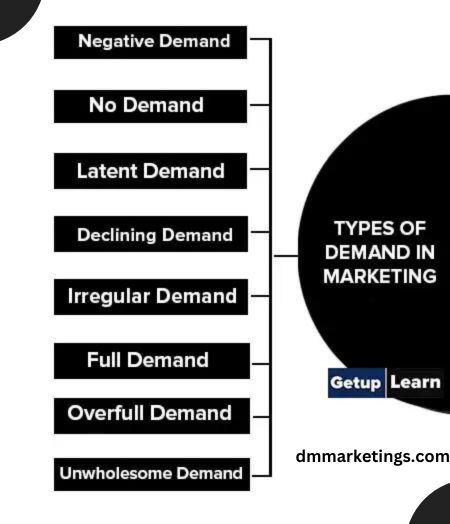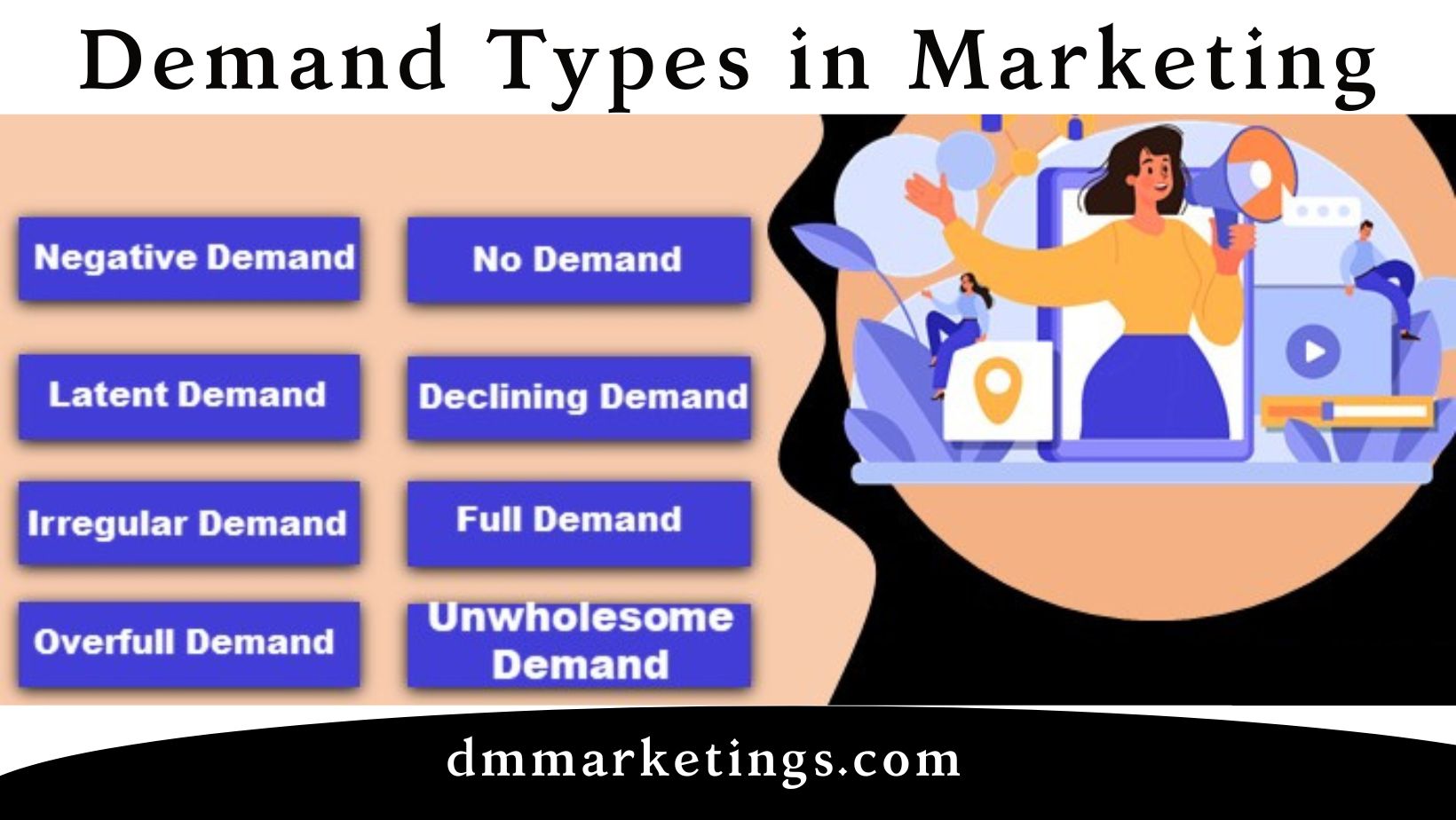Types of Demand in Marketing
Different market situations that are linked to varying demand levels are faced by marketers. The pricing strategy in particular is heavily influenced by demand volatility. Kotler lists the following eight categories of demand in marketing:
- Negative Demand
- No Demand
- Latent Demand
- Declining Demand
- Irregular Demand
- Full Demand
- Overfull Demand
- Unwholesome Demand
Demand Types in Marketing

Negative Demand
A product is in a state of negative demand when the bulk of the market finds it objectionable. Customers frequently steer clear of products like immunizations, heart surgery, dental work, etc. due to the unfavorable perception. Redesigning the promotional program and repositioning the products in the minds of consumers is the marketer’s job in order to influence their attitudes and beliefs about the target market.
No Demand
when the intended market is made up of people who are either unaware of the product or who are not interested in it. For instance, Haryana college students could not favor English language courses, and industrial houses might not be aware of the latest technological advancements. It is the marketer’s responsibility to inform the target audience about the product and then go on to explain its advantages.
Latent Demand
It’s possible that there is a hidden market for some things that is unmet by what is currently on offer. Strong latent demand may be seen in India in the country’s need for safer cigarettes, larger, more fuel-efficient cars, more affordable housing for middle-class workers, etc.
It is the responsibility of marketers to determine the size of the prospective market and take efficient action to meet the demand by offering products and services.
Declining Demand
Throughout its life, every product experiences diminishing demand. Every type of corporation, from those that produce tangible commodities to those that give services, must deal with this situation. In situations like these, the marketer needs to investigate the reasons behind the drop in demand and determine whether the product can continue in the same market with minimal changes or if diversification in a different market is necessary to maintain profitability.
Irregular Demand
Seasonality affects the demand for specific products in different ways. For instance, zoos are packed on the days when students are taking exams and empty during the summer. Certain hill stations’ hotels and resorts see high summer demand, yet it’s hard to get a single customer during the off-season.
Here, the marketer’s role is to keep the demand along the same trajectory. He needs to learn specific strategies, such as flexible pricing, exclusive offers, off-season discounts, and various marketing initiatives.
Full Demand
Because of the entire demand for their amount of business at this point, marketers are in the happiest position possible. Marketers’ preference in this age of shifting consumer preferences and tasks is to sustain the amount of demand as it is. At this stage, the goals should be to maintain quality standards and make research and development investments.
Overfull Demand
When an organization’s capability cannot meet the demand, unusual situations can occasionally occur. For instance, traffic can occasionally be too heavy in one area. People start hoarding after the government announces that fuel prices are going up, which creates an oversupply of demand.
In this case, the marketer’s role is to temporarily lower demand by using a price increase strategy. They might also embrace the idea of “demarketing,” which means lowering advertising and customer support.
Unwholesome Demand
This demand is related to a certain product category, such as blue movies, cigarettes, alcohol, and narcotics, among others. It is the responsibility of the marketer to inform consumers about the lethal nature of these items so they may stop using them.
